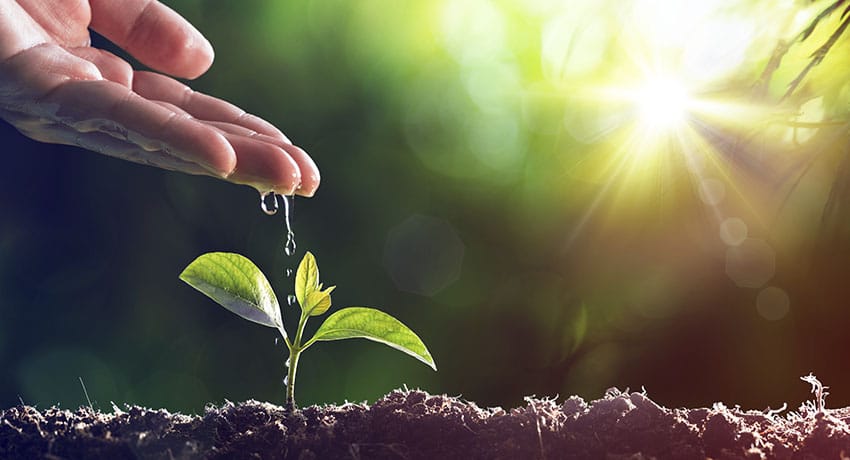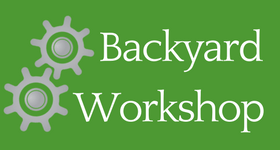Best Water for Plants and Watering Techniques

Every living thing requires water for life, we all know that, but have you ever considered that all water is not created equally? Today, we will review water quality, water usability for soil based botanical purposes, and the best watering techniques for healthy, beautiful plants.

Water, Water, Everywhere and Not a Drop to Drink
There’s ocean salt water, engineered salt water, filtered water from taps, ground water from wells and springs, and rain water. We are an H2O abundant planet but not all water is created equally. Let’s take a look at a few kinds of options available for your gardening needs.
Distilled
Distillation is an application for removing impurities from water. The impure water is boiled to the point of evaporation and the vapor, or steam, then condenses and is collected in a clean vessel. Most people don’t distill their own water (unless they were trapped on a desert island and have mad survival skills), but rather purchase gallon jugs at the local grocery store. The problem with distilled water is that the water no longer contains valuable minerals needed by humans, animals, and plants. Short periods of use aren’t a problem, but prolonged use is not only unhealthy, but an unsustainable long term expense. Not to mention the environmental addition of plastic jugs to your trash collection.
Tap Water Woes
For human consumption, cities process and filter water to improve water quality, reducing containments and adding chemicals for the health of their citizens. Plants however don’t always thrive with these water amendments. Fluoride, chlorine, and sodium are a few of the worst chemical additive offenders to plant life. Plants thrive with water rich in nutrients from soils and bio-nutrients from other plant and composted materials. Where humans can’t ingest the bio-matter, plants thrive. Additionally, where humans need purified and amended water, plants suffer greatly. pH levels can be off for plants with tap water as well. One solution to the tap water issue is to install a water filtration unit on your home. This may seem like an oxy-moron but the additional filtration is actually removing the chlorine and balancing the pH levels. Another, more economical, solution would be to fill a five gallon bucket of water and set it outdoors, uncovered, for twenty-four hours, which allows the chlorine to dissipate from the water. You can add water soluble fertilizer to your bucket every seven to fourteen days for added benefits.
Purified/Bottled Water
Bottled water is often too expensive for extended use in watering and can be full of the same chemicals that are amended in tap water. Furthermore, just like distilled water, this option adds unnecessary plastic jugs to your trash collection. Bottled water is better than no water, but overall, it should be your last resort.
Nature’s Bounty – Rain and Groundwater
By far, the best water sources for plant health come directly from the earth in the form of well water, spring water, and rain. If you own property with a water well or a spring fed water source, chances are you are already utilizing this bountiful supply for your watering needs. If you don’t, then rain collection is your next best option. Fortunately, the consumer market is filled with low cost rain barrel systems to make collection a snap. Some collect straight from the rain falling from the sky and others collect from rain gutter runoff. Check with your local garden center, home improvement store, or your local city water department for product availability. The only thing to be mindful of with rain collection is the spawning of mosquito larvae in the standing water. Mosquitos can be annoying but they often spread unwanted disease (i.e. West Nile virus). Fortunately, you can control the larvae with commercial larvicide in the forms of tablets, pellets, and granules. Check with your garden center for available products in your area.
Greywater Systems
New technology in water conservation, grey water irrigation systems are full recycle systems that collect water from your home that have been used in showers, baths, sinks, automatic dishwashers, and clothes washing machines. The drained water from these sources is collected into a septic tank, run through a filter, then the water is pumped out to irrigation system. With the cost of new technology, this may not be economical yet but it’s a great way to conserve and use our natural resources wisely. This type of system can be set up on all houses using both city and well water.
Watering Techniques
Everyone knows that plants need water, but how much, how often, and how should it be done? The simple answer is “ask the plant,” a common term used in botanical study. Seriously though, each plant will communicate its needs if you are observant and attentive. Are the leaves and flowers seemingly droopy? Is the soil at the base loose and dry? If you insert your forefinger one to two inches into the soil, is the soil dried out? Do you notice yellowing or browning leaves? All of these are indications of too little water. Do you notice mildew on areas of the plant? Are there fungi growing around the root area of the plant? Is the soil so wet that it won’t clump together when fisted? All of these conditions indicate too much water. Again, the simplest solution is to “ask the plant.”
Frequency
It is a best practice to water early in the morning or late in the evening, but not after dark. This allows the leaves time to dry out. Moisture that fails to evaporate overnight opens the plant up to systemic diseases and fungus.
Another best practice is to water infrequently but deeply. Allow enough time for the soil to slightly dry out before watering again. This practice in turf causes the root system to grow deep to obtain water, thereby creating a healthy, draught tolerant plant system. Some cities have instilled water schedules to control water conservation. This means that a twice per week schedule (or in very hot conditions three times per week) fits both the conservation schedule and the healthy root development objectives.
In containers, plant beds, and gardens, daily watering is usually the best timing, allowing the leaves and soil to dry completely before watering again. The number one concern is that you must ensure the water has had time to reach the root system before you stop watering. If your bed or garden has mulch over the soil, which is a great conservation technique, you need to make a time adjustment and add more water to make sure the water is absorbed by the soil and reaches the roots. It’s better to water in rotation, meaning that you should water for several minutes, then move to the next section, but circle back and water the whole pattern again before you put the water away. This allows the water time to seep into the soil deeply and not be wasted as unused runoff.
Delivery
Watering techniques can play a substantial role in water conservation as well. Some areas, like the southwestern states of the US, including New Mexico, Arizona, Oklahoma, and Texas, make use of automatic irrigation systems, including use at residential homes. Irrigation systems can be a great help in timing and frequency but you should perform regular coverage checks to be sure that all of the intended areas are receiving their water needs. Beds are equipped with risers and spray nozzles to ensure that the water gets above the various plants that could block other plants from receiving water. Other options include soaker, or drip, lines that water on a timer, but are buried just below the surface of the soil. These lines deliver water that is absorbed directly by the soil and root systems and are less prone to evaporation concerns.
Northern states, with their cooler temperatures, don’t use irrigation systems very often. In those areas, watering is delivered through hand methods, primarily hoses and watering cans. Watering cans are the perfect choice for small container gardens and indoor plants. Just remember to add enough water to reach the root system, no matter how many trips back to the faucet that might require. Watering with a hose can be less physically taxing and provide a more thorough watering, so for these reasons hose watering is preferred. Using a nozzle on the end of the hose is also a best practice; for one, it reduces waste; and for another, it disperses the flow of water which can cause damage to the plant by uncovering the roots.
Water, the Stuff of Life
Utilizing best practices in water quality, water frequency, and water delivery is the best formula for a healthy, thriving yard and garden. We appreciate your comments and discussion. What techniques do you use in your yard and garden?

